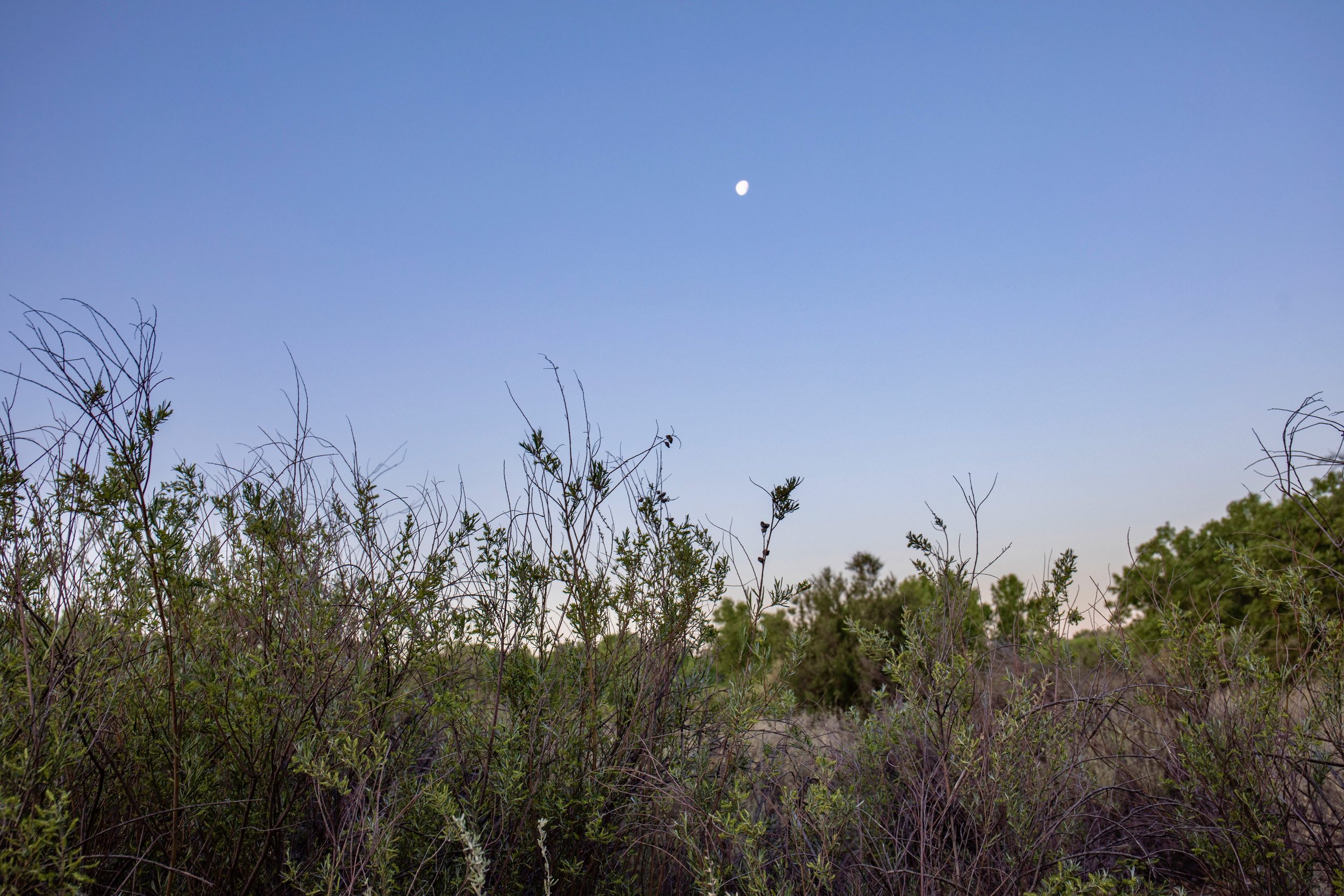Part Seven: ‘Not an object to be bartered,’ the Rio Grande is lifeblood for the land
As New Mexico’s largest river dries, pueblos work to preserve it — and to establish their rights
SILE, N.M. — Phoebe Suina, a hydrologist and board member of the Interstate Stream Commission, stands in front of the federally built reservoir on Cochiti Pueblo. (Photo by Diana Cervantes for Source NM)
The Rio Grande flows near Albuquerque as the sun rises over the Sandia Mountains. (Photo by Diana Cervantes for Source NM)
“I look at my hand, and you have all of these veins. They’re all blue, just like a river,” Suina (Cochiti Pueblo) said. “As blood flows through us, so do the rivers and streams across the land from the mountains.”
Phoebe Suina checks the leaves of a young coyote willow and cottonwood saplings along tributaries near Horn Mesa in the Jemez Mountains. (Photo by Diana Cervantes for Source NM)
The moon sets into a thicket of coyote willow along the Rio Grande. Drought, and a changed river mean salt cedar and other invasive species have muscled out indigenous plants such as the copses of cottonwoods and coyote willow along much of the river’s banks. (Photo by Diana Cervantes for Source NM)
Phoebe Suina dips her hands into the Rio Chiquito. Suina said water has to be treated as precious or “we lose what we take for granted.” (Photo by Diana Cervantes for Source NM)




